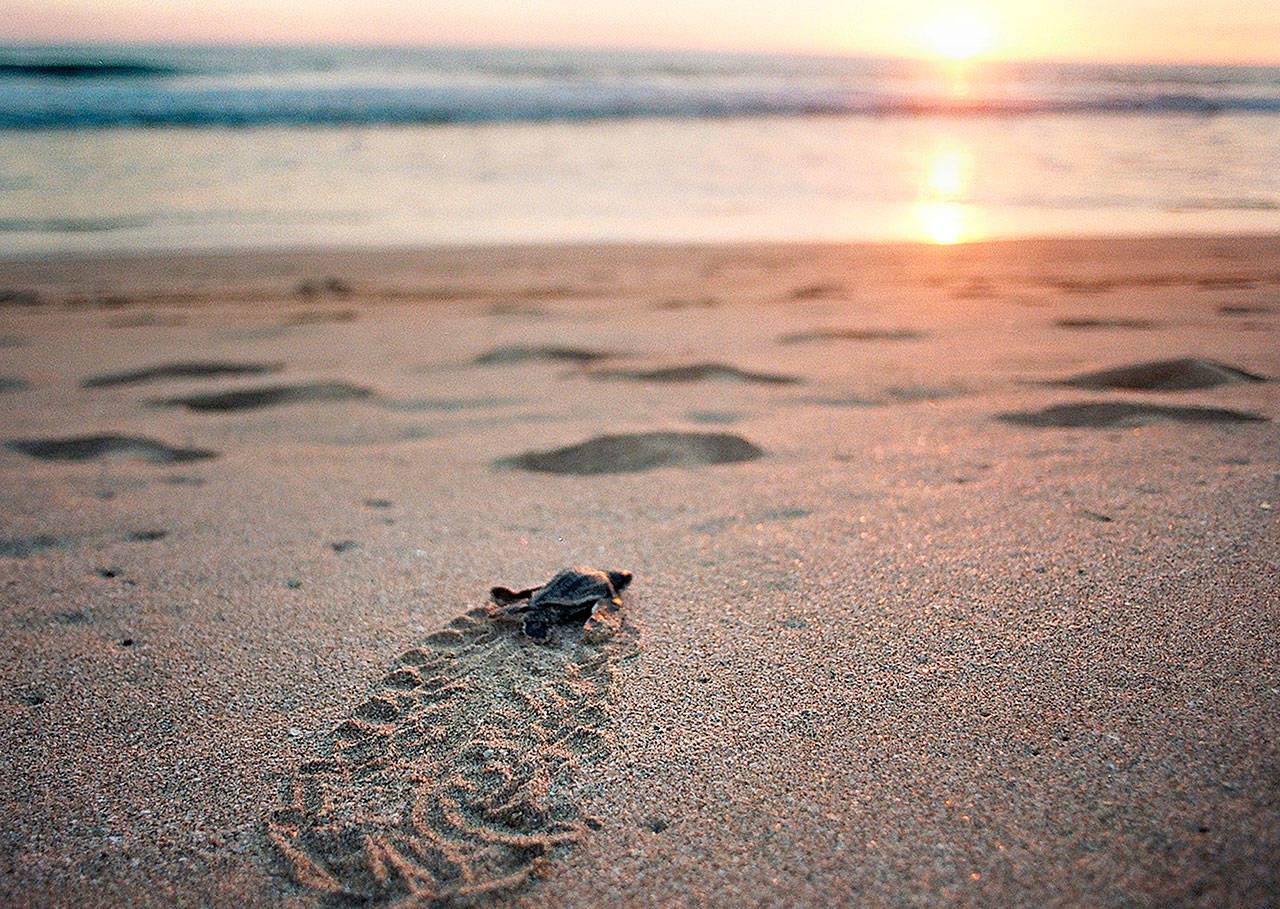WASHINGTON, D.C. — Leatherback sea turtles are likely to be “effectively extinct within 20 years” if two new federal permits for fishing off the coast of California go into effect, environmental groups claim in a new lawsuit.
In April, the Trump administration granted new two-year “exempted fishing permits” to two California-based vessels in what are currently protected waters.
This type of experimental permit is “the only way we can improve the fisheries,” said Kathleen Fosmark, co-chair of the Alliance of Communities for Sustainable Fisheries.
Environmental groups argue, however, that the fishing permits are using a loophole to allow the controversial fishing practice known as longline fishing in the protected Pacific Leatherback Conservation Area.
Longline fishing has been banned from waters off California since 2004, when the federal government determined that it endangered sea turtles that feed along the coast.
The commercial fishing technique uses hundreds of baited hooks attached to a long fishing line — up to 60 miles —to catch swordfish, tuna and other fish. But the hooks also catch other marine wildlife, including endangered Pacific leatherback, loggerhead and olive ridley sea turtles.
Pacific leatherback turtles —the world’s largest turtles —are at particular risk of extinction, scientists say.
“The failure of the Fisheries Service to comply with environmental laws in issuing the permit diminishes leatherback sea turtles’ slim chance to defy predictions of extinction,” attorneys for the Center for Biological Diversity and Turtle Island Restoration Network claim in their suit.
The National Marine Fisheries Service, an agency within the National Oceanic and Atmospheric Administration, determined otherwise. In a notice issued on May 8, the federal agency said the permits “are not likely to jeopardize the continued existence of any listed species or result in the destruction or adverse modification of critical habitat.”
The notice points out that the permits require the two vessels to take extra precautions, “to monitor and lower the risk of interactions with protected species,” and set “limits on incidents of hooking or entanglement of loggerhead and leatherback sea turtles.” The longline fishing will have to halt immediately if “one mortality of a leatherback sea turtle is observed.”
The agency has argued that the “mortality of one adult female over a two-year period would present negligible additional risk to the survival and recovery of the western Pacific leatherback sea turtle population and would present no risk to the more endangered eastern Pacific population.”
But Catherine Kilduff, a senior attorney with the Center for Biological Diversity, said that many turtles that get caught on the hooks don’t die immediately. “If they get a dead leatherback sea turtle on the hook, they have to stop,” Kilduff said. “Some number of those sea turtles would die after they get put back in the ocean.”
She and other environmental groups advocate for a different type of swordfish fishing that requires more active tending by humans, and is thus more costly.
Fosmark, who is based in Monterey County and has fished swordfish in the past, said that fishing technique isn’t designed “to harvest swordfish commercially. The amount of money it would take to take your boat out and do a fishery and end up with a profit isn’t feasible,” she explained.
Fosmark believes the lawsuit and others like it environmental groups have filed in recent years are “really about taking down the fisheries.”
“They’ve said there’s nothing the fisheries can do” to meet their environmental standards, she said.
Fishermen have continued to apply for permits to experiment with longline techniques off the Pacific coast after the ban went into force in 2004. But this is the first time the federal government has issued one.
“It really seems like the Trump administration has been pushing this,” Kilduff said.
The Trump administration also denied the California Coastal Commission’s request to review the proposed permit to determine whether it was consistent with the California Coastal Management Program, a federally approved system for managing and protecting the state’s coastal ecosystem.
“The proposed (permit) will occur within leatherback foraging grounds and therefore have a reasonably foreseeable effect on leatherbacks … a California coastal zone resource,” the commission wrote in 2015.
The National Marine Fisheries Service responded in March 2019 “that the potentially affected leatherback sea turtles, at least in this instance where the permitted action would be far offshore, are not a coastal resource of California.”
The National Marine Fisheries Service’s West Coast office declined to comment on pending litigation.


